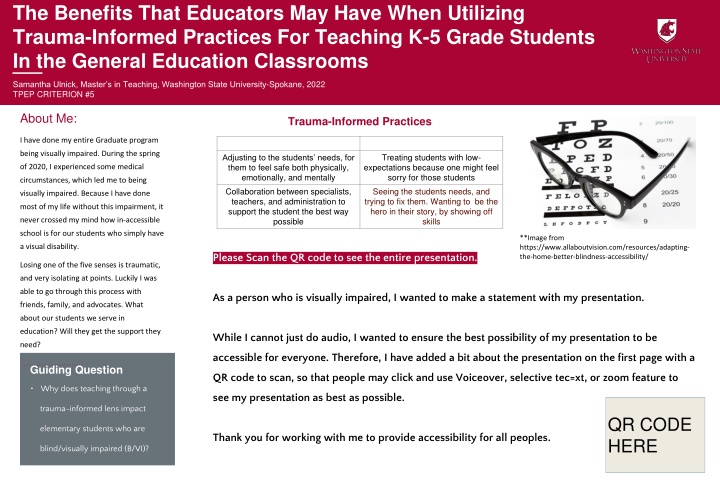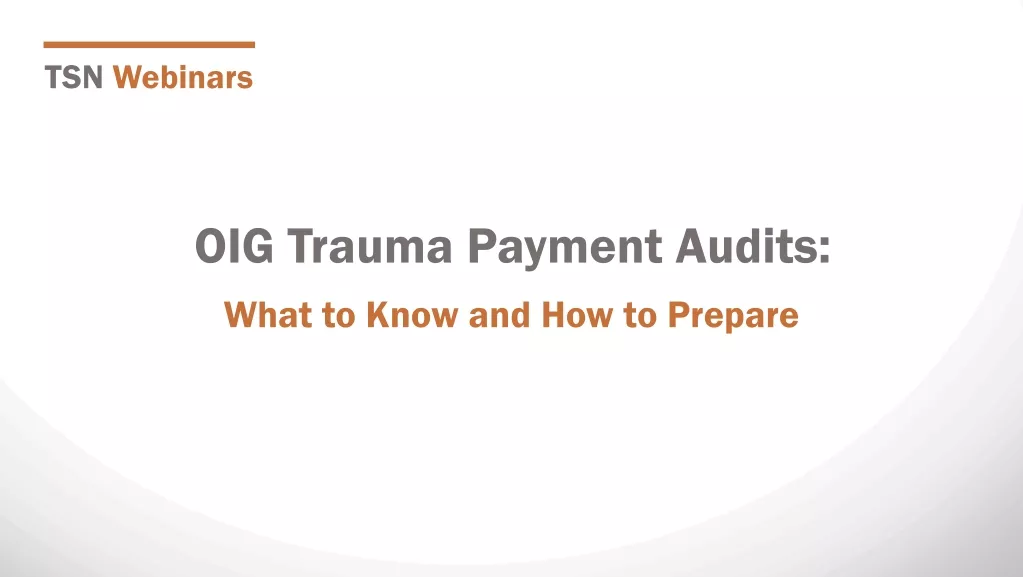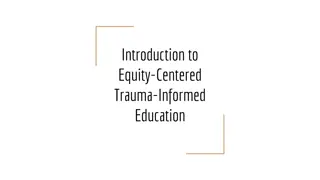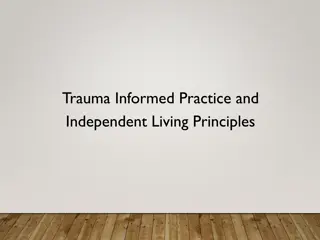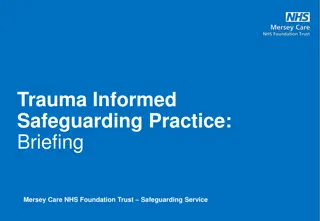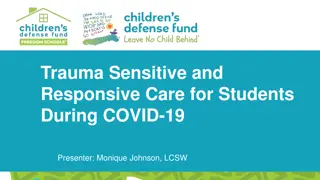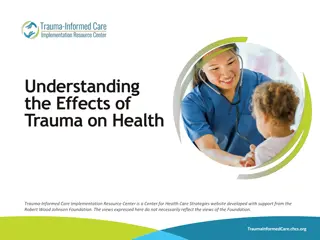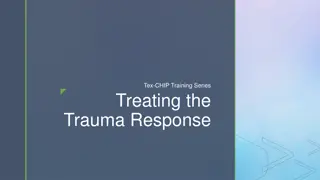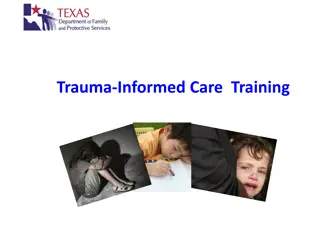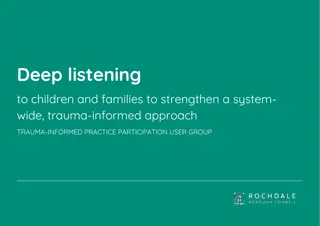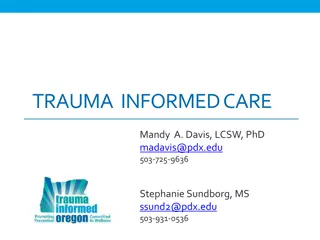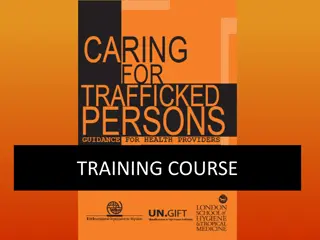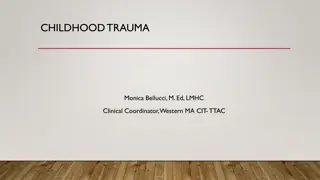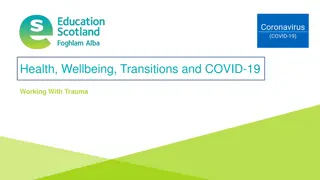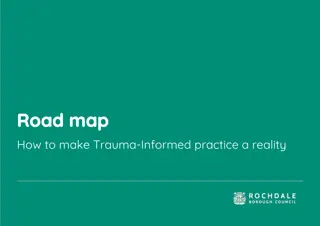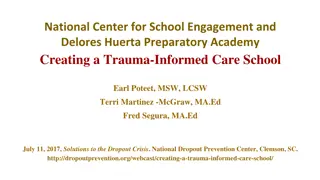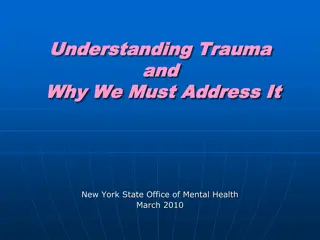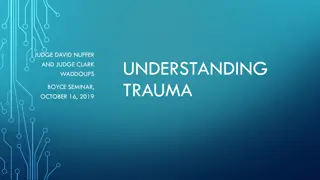Benefits of Trauma-Informed Practices for Educators of K-5 Students
Educators can gain valuable insights and strategies by adopting trauma-informed practices when teaching K-5 grade students in general education classrooms. This approach prioritizes students' safety and emotional well-being, leading to a more inclusive and supportive learning environment. The impact of such practices on students with visual impairments is highlighted in this presentation by Samantha Ulnick, a Master's in Teaching graduate from Washington State University-Spokane.
Download Presentation

Please find below an Image/Link to download the presentation.
The content on the website is provided AS IS for your information and personal use only. It may not be sold, licensed, or shared on other websites without obtaining consent from the author.If you encounter any issues during the download, it is possible that the publisher has removed the file from their server.
You are allowed to download the files provided on this website for personal or commercial use, subject to the condition that they are used lawfully. All files are the property of their respective owners.
The content on the website is provided AS IS for your information and personal use only. It may not be sold, licensed, or shared on other websites without obtaining consent from the author.
E N D
Presentation Transcript
The Benefits That Educators May Have When Utilizing Trauma-Informed Practices For Teaching K-5 Grade Students In the General Education Classrooms Samantha Ulnick, Master s in Teaching, Washington State University-Spokane, 2022 TPEP CRITERION #5 About Me: Trauma-Informed Practices I have done my entire Graduate program What it is What it is not being visually impaired. During the spring Treating students with low- expectations because one might feel sorry for those students Adjusting to the students needs, for them to feel safe both physically, emotionally, and mentally of 2020, I experienced some medical circumstances, which led me to being Collaboration between specialists, teachers, and administration to support the student the best way possible Seeing the students needs, and trying to fix them. Wanting to be the hero in their story, by showing off skills visually impaired. Because I have done most of my life without this impairment, it never crossed my mind how in-accessible school is for our students who simply have **Image from https://www.allaboutvision.com/resources/adapting- the-home-better-blindness-accessibility/ a visual disability. Please Scan the QR code to see the entire presentation. Losing one of the five senses is traumatic, and very isolating at points. Luckily I was able to go through this process with As a person who is visually impaired, I wanted to make a statement with my presentation. friends, family, and advocates. What about our students we serve in education? Will they get the support they While I cannot just do audio, I wanted to ensure the best possibility of my presentation to be need? accessible for everyone. Therefore, I have added a bit about the presentation on the first page with a Guiding Question Why does teaching through a QR code to scan, so that people may click and use Voiceover, selective tec=xt, or zoom feature to see my presentation as best as possible. trauma-informed lens impact QR CODE HERE elementary students who are Thank you for working with me to provide accessibility for all peoples. blind/visually impaired (B/VI)?
The Benefits That Educators May Have When Utilizing Trauma-Informed Practices For Teaching K-5 Grade Students In the General Education Classrooms Samantha Ulnick, Master s in Teaching, Washington State University-Spokane, 2022 TPEP CRITERION #5 About Me: Trauma-Informed Practices I have done my entire Graduate program What it is What it is not being visually impaired. During the spring Treating students with low- expectations because one might feel sorry for those students Adjusting to the students needs, for them to feel safe both physically, emotionally, and mentally of 2020, I experienced some medical circumstances, which led me to being Collaboration between specialists, teachers, and administration to support the student the best way possible Seeing the students needs, and trying to fix them. Wanting to be the hero in their story, by showing off skills visually impaired. Because I have done Photo caption here. most of my life without this impairment, it never crossed my mind how in-accessible school is for our students who simply have **Image from https://www.allaboutvision.com/resources/adapting- the-home-better-blindness-accessibility/ a visual disability. Please Scan the QR code to see the entire presentation. Losing one of the five senses is traumatic, and very isolating at points. Luckily I was able to go through this process with As a person who is visually impaired, I wanted to make a statement with my presentation. friends, family, and advocates. What about our students we serve in education? Will they get the support they While I cannot just do audio, I wanted to ensure the best possibility of my presentation to be need? accessible for everyone. Therefore, I have added a bit about the presentation on the first page with a Guiding Question Why does teaching through a QR code to scan, so that people may click and use Voiceover, selective tec=xt, or zoom feature to see my presentation as best as possible. trauma-informed lens impact QR CODE HERE elementary students who are Thank you for working with me to provide accessibility for all peoples. blind/visually impaired (B/VI)?
The Benefits That Educators May Have When Utilizing Trauma-Informed Practices For Teaching K-5 Grade Students In the General Education Classrooms Samantha Ulnick, Master s in Teaching, Washington State University-Spokane, 2022 TPEP CRITERION #5 ARC Model The ARC (Attachment, Self-Regulation, and Competency) model focuses on three major area in a child s life with regards to trauma. While this model is typically used for families, it helps bring great understanding of what educators do through the practice of trauma-informed teaching. Photo caption here. The bottom level-or orange level- is the foundation of this model. Teachers and caregivers need to see eye-to-eye with each other for the best results of trauma-informed practices.This section addresses the importance of relationship with everyone involved. The green level addresses inner monologues and self-monitoring around the child. The educator needs to understand their own personal triggers and emotions around children. The red layer explains that relationships may be difficult for students with trauma, and exposes that naming emotions and feelings can be quite hard for these students. They need practice and modeling of how to do this. The blue level explains the importance of identity, relationships, and communication skills. It is important to have positive relationship to one-self, too.
The Benefits That Educators May Have When Utilizing Trauma-Informed Practices For Teaching K-5 Grade Students In the General Education Classrooms Samantha Ulnick, Master s in Teaching, Washington State University-Spokane, 2022 TPEP CRITERION #5 Trauma-Informed Practices Tools: What it is What it is not There are so many tools to use for Treating students with low- expectations because one might feel sorry for those students Adjusting to the students needs, for them to feel safe both physically, emotionally, and mentally students who are visually impaired! Brailers, large texts, high contrast, Collaboration between specialists, teachers, and administration to support the student the best way possible Seeing the students needs, and trying to fix them. Wanting to be the hero in their story, by showing off skills glasses, magnifiers, canes, guide dogs, and so many other tools are Photo caption here. Photo caption here. available for people to use! Inclusion and Identity ARC Model Aliquam vel fringilla mi, quis auctor justo. Vestibulum ante ipsum primis in faucibus orci luctus et ultrices posuere cubilia curae: Pellentesque habitant morbi tristique senectus et netus et. Malesuada fames ac turpis egestas. Nulla dolor ipsum, congue in leo id, porta pellentesque eros. Nullam porta tincidunt lectus. Vestibulum auctor in arcu.
